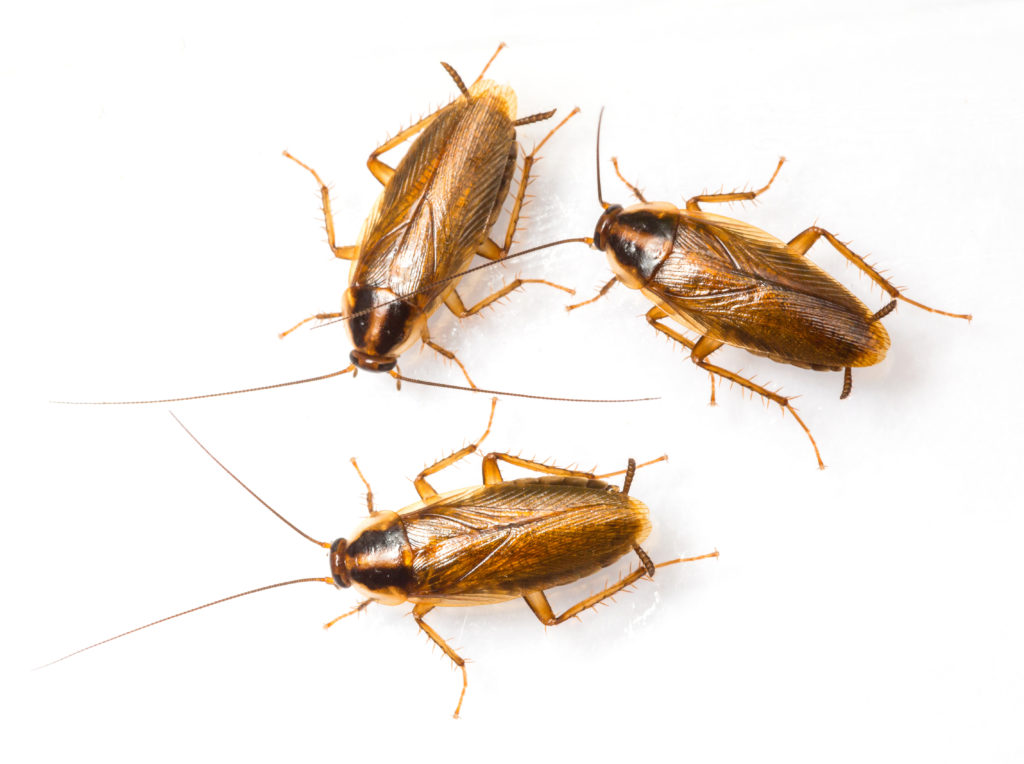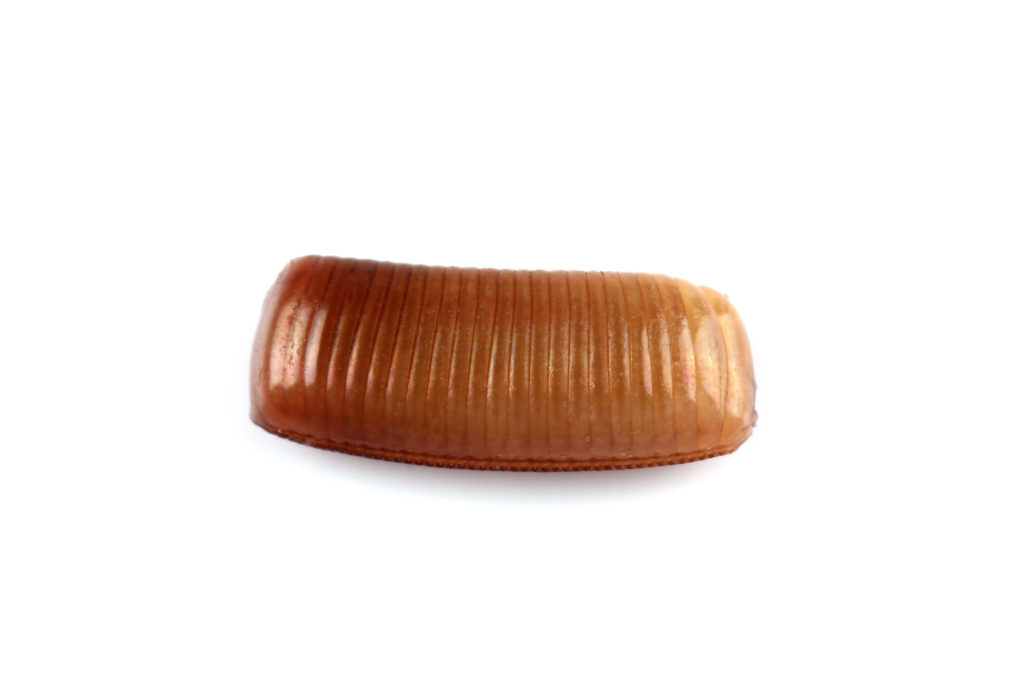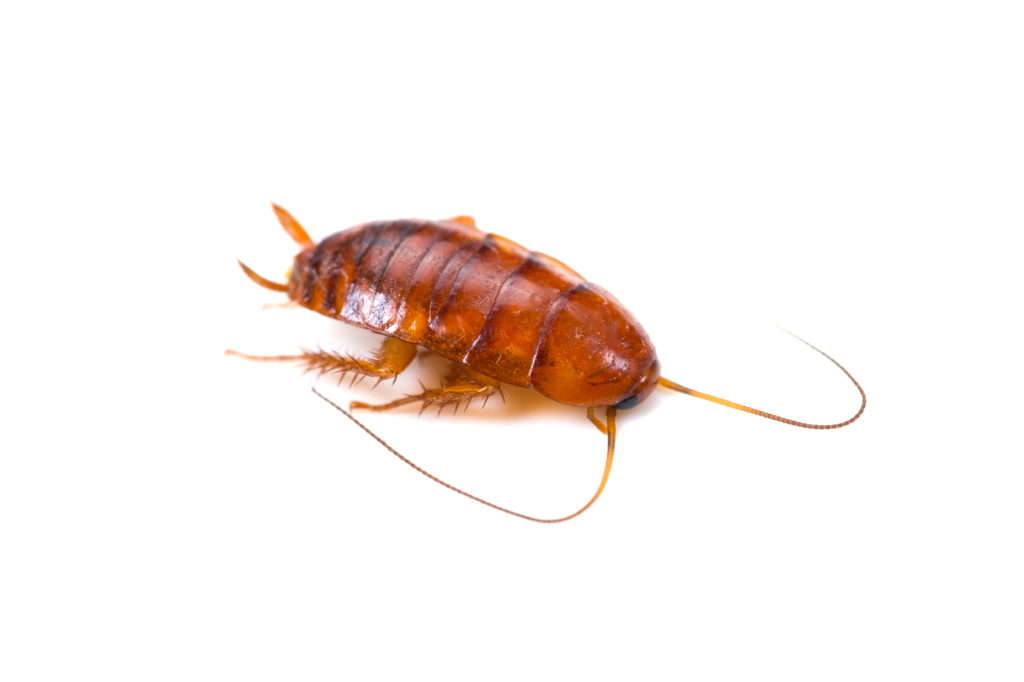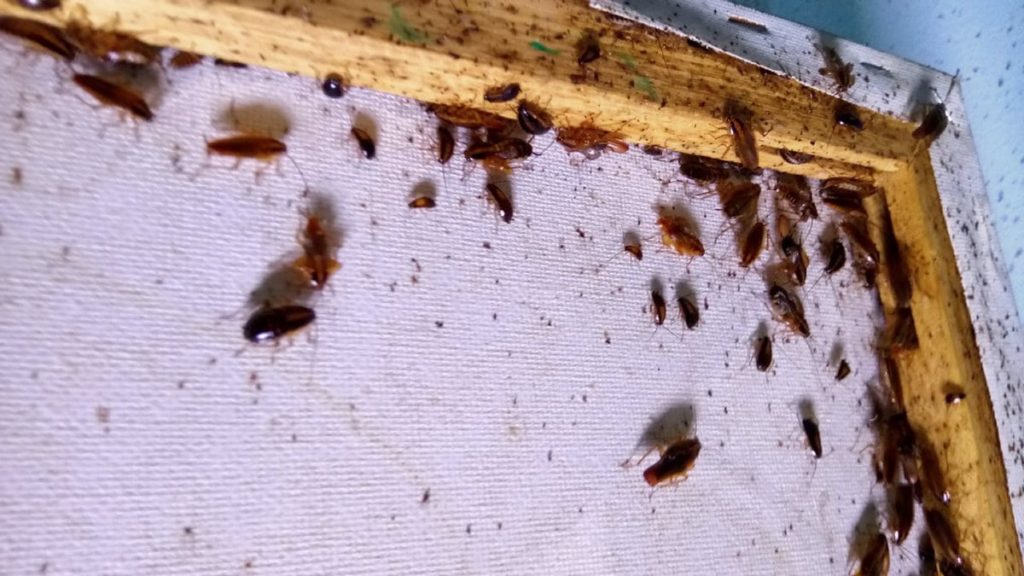The most effective way to eliminate cockroaches is to use a multi-step approach.
Even for small infestations, I recommend this approach.
One of the most common mistake people make when trying to eliminate cockroaches is only using one source.
German cockroaches breed faster than any other cockroach species; one female can produce up to 400 young in only about 100 days.
Since they breed very quickly, they also develop resistance to insecticides very quickly.
A lazy approach to eliminating cockroaches will only result in a more resistant cockroach population.
Taking proper and immediate action is crucial to eliminating cockroaches in your home.
The best way to get rid of cockroaches in your home is to follow the 6 steps approach below.
Although this approach is not fast it is effective and less chemically invasive than other approaches.
When using this method you can expect to see results within two weeks and eliminate all the cockroaches in your home within two months.
How Do You Get Rid of German Cockroaches?
1. Identification – Glue/ Sticky Traps
The first step to treating any cockroach infestation is identification and severity.
Sticky traps are an effective way to identify what types of cockroaches you have, how large the infestation is, and what parts of your home receive the most traffic.
Most homeowners mistake sticky traps for a control and elimination method, but studies show that sticky traps are ineffective at eliminating cockroach infestations.
The way these traps work is that they attract roaches with a specific scent.
Once the cockroaches walk over the trap, the glue will prevent them from crawling out.
Place these traps under appliances on top or inside cabinets, under bathroom toilets, and near water sources.
I recommend placing around 6-8 traps around your house so you can determine the extent of your infestation.
It may take a few days to get a decent sample in smaller infestations.
But with larger infestations, one day is typically enough.
Once you have identified the type of cockroach, level of infestation, and activity areas, you can begin getting rid of the cockroaches in your home.
It is also important to use sticky traps after your treatment to test how effective it was.
I also recommend keeping a few traps so you can test your house for the next several months to make sure the infestation does not return.
2. Apply Gel Bait to High Traffic Areas
Gel bait is one of the most effective ways to eliminate cockroach infestations.
This control method is highly effective because it implements tertiary kills.
Here’s what I mean.
Gel baits turn cockroach feces into poison.
When a cockroach ingests gel bait, they don’t die right away.
Because juvenile roaches (nymphs) rely on feces to survive, the toxic wastes will kill them.
Once they die, other cockroaches that eat their bodies become poisoned too.
Bait station can take one of two forms.
- Bait Stations
- Syringe or Tube Applicators
Bait stations are small stations were roaches can go and retrieve the gel bait.
While these traps are easy to place and remove, they can be limiting.
They don’t always fit in areas where roaches frequent, such as holes and crevices.
To access these areas, use syringes in conjunction with the station.
Apply gel bait to small crevices around your kitchen to ensure that you infect as many roaches as possible.
Some other great places for application include inside your cabinets, floorboards, and under your appliances.
Apply a pea-sized drop of gel bait about every two feet.
Doing so will allow the roaches easy access to the bait.
Gel bait is only effective for two weeks, so reapply accordingly.
To keep track of where you place your gel bait, place it on a 2×2 inch wax paper.
The wax paper wrap will also make it easy to put bait in hard-to-treat places (e.g., within stacks of clutter).
After two weeks, wipe down or remove the wax paper and apply some more.
3. Use Dust Bait in Small Crevices
Dust baits are similar to gel bait, except they come in the form of powder.
These are typically applied with a small hand pump or tube.
Use these devices to apply dust bait to high traffic areas or small crevices that are hard to reach with gel bait.
The layer of dust you apply should be very light and barely visible to the naked eye.
Cockroaches will avoid thick layers of dust because it is hard to walk through.
To make sure you don’t apply too much, one to two pumps is typically sufficient.
When roaches walk over the bust, it will get all over their bodies.
Since roaches groom themselves frequently, they will eat the dust and die.
The best place to apply dust bait include:
- Wall Voids
- Holes on Walls
- Crevices Between Cabinets and Appliances
- Behind and Under Appliances – Dishwasher, refrigerator, stove, microwave.
- Under and Inside baseboard for Cabinets
4. Insect Growth Regulators (IGR’s)
When using baits, it’s important to remember that cockroaches at different stages don’t feed on bait with the same appetite.
Often pregnant females and nymphs do not forage for food but depend on the feces from other adult roaches.
To prevent your cockroach infestation from growing, use insect growth regulators or IGRs.
IGRs are a useful tool that helps break the rapid life cycle of german cockroaches.
To do this, IGRs mimic the juvenile hormone that naturally occurs in an insect and disrupts the nymph’s growth cycle.
As a result, IGRs prevent the normal development of baby cockroaches so they cannot produce viable eggs as adults or die during the molting process.
For easy in-home use, use IGR packets rather than sprays.
Break the pack to activate the hormone and place them in your kitchen.
I recommend placing them in your cabinets or drawers to can keep track of them easily.
For most, 1 IGR packet treats 50-75 square feet, so apply them to your home accordingly.
IGR packs last about three months, so remember to replace them with a fresh pack to prevent further growth of your infestation.
Keep these packets active for 6-8 months after treatment; this will prevent stragglers from rebuilding the entire infestation.
5. Seal all Entry points
To prevent cockroaches from getting back in, you need to seal all entry points into your home.
If you had a roach infestation once, you likely got it from a neighbor or source near your home.
Make sure you inspect the inside and outside of your home thoroughly for entry points.
This includes cracks, holes around your home.
Check window seals and door seals to make sure they are completely covered.
One way to do this is to weatherstrip your doors and windows.
This is typically an inexpensive way to keep bugs out.
You can buy weatherstripping materials that are easy to install around your doors and windows.
It is also good to caulk around the door, especially around the seal joint.
These are often overlooked areas that cockroaches fit through.
Also, apply a door sweep to seal the gap between the bottom of the door and the floor.
These are typically very easy to install with a few screws or with adhesive tape.
Don’t forget about your screen doors and window screens.
Inspect your doors and windows for any loose, torn, or damaged screens.
Replace any damaged screens to prevent cockroaches from entering your home.
Remember, cockroaches can fit into the tiniest cracks and holes.
Even holes you might not think they can fit into, its best to cover it because they likely can.
Another great location to look is under your sink, and other areas were pipes are protruding from the wall.
6. Apply an External Barrier Using Insecticide
If you had a roach problem, they might return.
If you live in an apartment complex, condos, or houses, your neighbors may also have roaches.
Most commonly, roaches spread from house to house.
The best way to avoid any of your neighbor’s pests from getting into your house is to apply external protection.
Use an outdoor insecticide and apply it around your house.
This will repel and kill any pest that goes over it.
It’s good to apply it to 3 feet on the surface of your house and 3 feet wide surface on the floor near your house.
Do this around your entire house to prevent additional insects from coming inside.
You will need to apply this every 4-6 months, depending on the concentration of your insecticide.
Don’t forget this step once you have eliminated your cockroaches.
It’s much better to kill and prevent cockroaches from getting in than to try and eliminate them once they are in your home.
What Does an Adult German Cockroach Look Like?

Cockroaches like any other insect, go through a life cycle: ootheca (egg), nymph (baby), and adult
So what does an adult German cockroach look like?
German cockroaches are one of the smallest types of cockroaches.
A full-grown adult ranges from ½ to ⅝ of an inch long.
They are light brown to tan in color.
German roaches are most distinguishable by two dark stripes right below their head or pronotum.
They have wings, like many other roaches. But they can’t fly.
Male German roaches typically have long wings that cover the body’s entire length.
Females have shorter wings which end just above the abdomen.
German cockroaches typically go through about 8-10 molts in 100 days before reaching adulthood and being able to reproduce.
What Do German Cockroach Eggs Look Like?

German cockroach eggs are small, tan or brown segmented capsules that are about ¼ to ⅓ inch long.
You can think of these as a small pill or purse.
Cockroach egg are scientifically referred to as ootheca.
Each ootheca contains between 30-40 baby cockroaches.
When looking for cockroach eggs, keep an eye out for ootheca casings.
This is a sign of a growing infestation.
What Do German Baby Roaches Look Like?

Baby roaches, also known as nymphs or instars, they are about ⅛ inch in length with a dark brown or black color.
As nymphs grow, they tend to get lighter in color and develop the signature dark stripes below their head.
Notably, baby roaches do not have wings allowing you to see the segments of their abdomen.
When nymphs grow, they go through a process called molting.
During molting, nymphs shed their exterior so that they can grow larger.
After molting, nymphs become a white cockroach.
White cockroaches are often referred to as albino cockroaches.
The reality is that albino cockroaches don’t exist they are just baby cockroaches that have that have recently molted.
If you see white cockroaches or their skin casings in your home, it’s likely that you have a growing infestation.
Do German Cockroaches Fly?
No. German Cockroaches do not fly.
While both adult females and male german cockroaches have fully formed wings, they do not fly.
Even if they do use their wings, it is often more of a flutter than full flight.
German cockroaches prefer to crawl and climb along guidelines and small crevices.
If the cockroaches in your home fly, you likely have a different species of cockroaches such as Asian, brown, smokeybrown, wood, or American cockroaches.
Do German Cockroaches Bite?
The short answer is yes.
There are reports of cockroaches biting humans.
But, the reality is that even if you have a cockroach infestation, you will likely never be bitten by a cockroach.
Most reports of cockroaches biting people take place in two conditions:
1. Massive Infestations
Reports of cockroaches biting people typically happen in houses with massive infestations.
In this situation, there is insufficient food to support the cockroaches and may result in chewing on fingernails or eyelashes.
Massive infestations are not safe for living.
Most people will never experience such a massive infestation, let alone live in one.
2. On Ships
The other situation where cockroaches have bitten people is on ships.
Cockroaches stranded on ships with very little to eat will often resort to biting humans.
Such attacks can cause irritation, lesions, swelling, and even minor infection.
Unless you saw a cockroach bite you, it is hard to identify a cockroach bite because they look very similar to other insect bites.
If you have what looks like an insect bite, you are more likely to have an allergic reaction to cockroaches.
The debris that cockroaches leave behind, such as feces, ootheca casings, skin casings, and dead bodies, can get into the air and cause allergic reactions.
Cockroach allergies are more common than you might think and are closely related to asthma.
Why Did I Get German Cockroaches?
- Cockroaches are very resourceful. They can enter your home in several ways, including:
- Crawling inside through small holes and cracks around your home.
- Hitching a ride on bags, backpacks, suitcases, and other containers.
- Openings around doors and windows.
Moving through pipes and other holes in shared walls.
Like most insects, german cockroaches are looking for a place to live.
They prefer locations that are warm, moist, dark, and plentiful with food sources.
Houses, especially kitchens and bathrooms, are perfect homes for cockroaches.
If there are plenty of hiding spots and food sources for cockroaches in your home, then you are more likely to find roaches.
If you’ve spotted a german cockroach in your home, this is a sign that you might have an infestation.
The standard rule of thumb suggests that for every cockroach you see, there are hundreds of more hiding.
Where Do German Cockroaches Hide?
A german roach’s favorite hiding place is dark, quiet, warm with food and water nearby.
If you have a German cockroach infestation, 99% of the time, they are hiding in your kitchen or bathroom.
Your kitchen is the perfect place for german roaches to hide; it offers warm, humid environments with easy access to food and water.
To determine if you have an infestation, you can check in these two places first.
Here are some places you should check in your kitchen:
- Under the sink.
- Behind, under, and on the side of appliances.
- On the bottom of your kitchen countertops.
- Services between kitchen cabinets.
- On top of cabinets and shelves.
- Baseboards and crevices at the bottom of the cabinets.
- Inside kitchen cabinets. Typically at the bottom drawers or the corners of cabinets.
- Near trash or inside trash cans.
- Near water sources such as pipes or hoses.
In bathrooms, German cockroaches often hide:
- Under the sink.
- Check baseboards and crevices at the bottom of the cabinets.
- Near and Around the toilet.
- Inside the base of the toilet.
- Behind, under, or on the side of any furniture in a bathroom.
When looking for cockroaches, use a flashlight.
The light will cause them to move and makes it easier to spot droppings or eggs.
Other hiding places include warm places in your home, such as wiring or electronics i.e. televisions and computers.
Just because you don’t spot cockroaches doesn’t mean that you don’t have any.
As I mentioned, even if you only see one German cockroach, it’s a sign that there are hundreds more hiding.
If you see cockroaches outside of your kitchen and bathroom, such as bedrooms or living areas, this is a sign of a much larger infestation.
Once infestations get large, this forces cockroaches outside of their common hiding spots.
How to Identify German Cockroach Infestation?

Cockroaches are nocturnal and great at hiding.
As a result, you might not notice cockroaches until the population grows.
Even if you look in some common hiding places, you might not see them, but this doesn’t mean they aren’t there.
Here are some ways you can identify if you have a cockroach infestation.
- Look for cockroach droppings; these often look like ground pepper or coffee grounds.
- Look for small grey, black, or yellowish stains around your house. These are signs of nymph dropping.
- Check for dead roaches around the house, especially under appliances.
- Check for the egg and egg casings.
Check for skin casings or body parts from molting baby cockroaches. - Try to pick up musty, oily, pungent odor in common hiding spots. Cockroach odor is typical, even with small infestations.
Without a trained eye or attention to detail, the tell-tale signs are difficult to notice.
To get around this, you can try using a trap.
Sticky traps, for instance, are a great way to confirm if you have a cockroach infestation.
These traps will catch anything that walks over it.
You can place these traps in high, traffic areas and common hiding spots such as under appliances and on top of cabinets.
These traps are a great way to determine the type of cockroach and level of infestation you have.
If your trap only has a few cockroaches with about the same size, your infestation is likely small and still in the early stages.
On the other hand, if your sticky trap has many roaches, especially at different life cycles (adults, various sized nymphs, etc.), chances are your infestation is growing and has gone through multiple reproductive periods.
Are German Cockroaches Dangerous?
Cockroaches are not only an inconvenience but also a health danger.
They leave their droppings and eggs around your home.
This is especially true in your kitchen, where they contaminate your eating utensils and food.
German cockroaches walk around filth and feces and easily spread bacteria and other pathogens in your home.
These bacterias can cause salmonella and infections such as staphylococcus, and streptococcus.
According to the World Health Organization (WHO), cockroaches can also cause dysentery, diarrhea, cholera, and typhoid fever.
Another often overlooked side-effect of cockroaches is the allergic reactions they cause in human beings.
This is especially concerning for those with asthma.
Research by the Asthma and Allergy Foundation (AAFA) has shown that the enzymes found in excrement, shedding body parts, eggs, and saliva can trigger both allergic reactions and asthma attacks.
